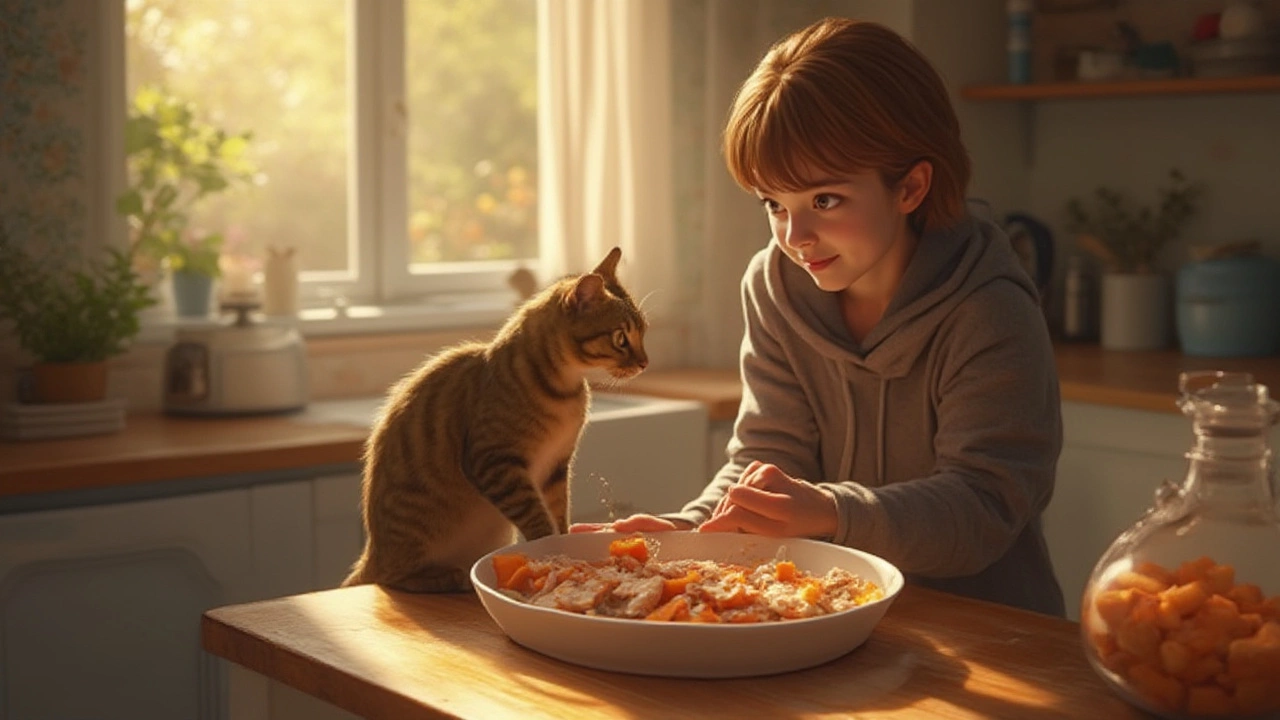Best Cat Food Guide: Choose the Right Food for Your Cat
Picking cat food feels overwhelming—there are endless bags, cans, and purr‑claims on every aisle. The good news? You don’t need a degree in nutrition to make a solid choice. In the next few minutes you’ll learn what matters most, why wet and dry each have perks, and how to spot a formula that truly supports a healthy, curious cat.
Wet vs Dry: What’s Best?
Wet food packs a lot of moisture, which helps cats stay hydrated. Most indoor cats barely drink enough water on their own, so a bowl of pâté or shredded morsels can boost their fluid intake. Wet meals also tend to be richer in protein and lower in carbs, which mirrors what a wild cat would eat. On the flip side, dry kibble is convenient, cheap, and good for dental health because the crunchy texture can scrape off some plaque.
Which one should you choose? It isn’t a strict either/or decision. Many owners feed a mix: dry in the morning for ease, wet at dinner for moisture and flavor. If your cat has kidney issues or urinary concerns, prioritize wet food. If you travel a lot or have a multi‑cat household, dry can be a practical staple.
How to Pick a Quality Cat Food
Start with the ingredient list. Real meat should be the first item—look for "chicken," "turkey," or "salmon" rather than vague "meat meal" or "animal digest." Avoid foods that list corn, wheat, or soy high up; they’re filler and can trigger allergies.
Check the protein percentage. Cats are obligate carnivores, so aim for at least 30% protein on a dry label and 8% on a wet label (the percentage is higher because wet food contains more water). Taurine is a must; it’s an amino acid cats can’t make themselves. A good formula will list taurine explicitly.
Watch the calorie count. Over‑feeding leads to obesity, which brings joint, heart, and diabetes problems. Use the feeding guide on the bag as a starting point, then adjust based on your cat’s weight and activity level. A quick weigh‑in each month tells you if you need to cut back or add a bit.
Consider life stage. Kitten formulas contain extra calories and DHA for brain growth. Senior foods lower fat and add joint‑supporting nutrients like glucosamine. Feeding a mature cat a kitten diet can cause weight gain; feeding a senior a kitten blend can be too rich.
Read the label for any added sugars, artificial colors, or preservatives. Natural preservatives like mixed tocopherols (vitamin E) are fine; synthetic BHA, BHT, or ethoxyquin are best avoided.
If you’re unsure, talk to your vet. They can recommend brands that meet UK standards and fit your cat’s health profile. Many vets also have sample trays, so you can test a new food before committing to a big bag.
Finally, give your cat time to adjust. A sudden switch can cause stomach upset. Mix a small amount of the new food with the old, gradually increasing the new portion over a week. Watch for any changes in stool, appetite, or energy—those are clues about how well the food sits.
Choosing the best cat food doesn’t have to be a gamble. Focus on real meat, adequate protein, proper life‑stage formulation, and minimal fillers. Pair wet and dry for balance, monitor your cat’s weight, and keep an eye on any health signs. With these basics, you’ll feel confident feeding your feline a diet that keeps them purring for years to come.

Best Cat Food Options for Starving Felines: Nutrient-Rich Choices and Care Tips
Find out the best foods to give a starving cat, why nutrition timing matters, and how to support recovery. Get expert tips from a cat-loving Kiwi mum.
View more
Best Cat Food: What Really Deserves the #1 Spot?
Picking the best cat food isn't as simple as grabbing the prettiest bag from the shelf. Cats have specific nutritional needs that can make food shopping overwhelming. This article breaks down what really matters when choosing the top cat food, covering quality ingredients, real-life feeding tips, and what top-rated options get right (and wrong). Cut through the marketing noise and find out how the best cat food stacks up against the rest, with practical advice for anyone feeding a feline. Get the facts, not the fluff, so your cat eats better and stays healthier.
View more
Top 5 Best Dry Cat Food Brands for Happy, Healthy Cats
Picking the right dry cat food can seriously impact your cat’s health and mood, but with countless options on the shelves, it's tricky knowing which ones stand out. This article breaks down the five best dry cat foods that really deliver on both nutrition and taste, using insights from cat owners and experts. Expect tips on ingredients to look for, common red flags, and what actually matters for your cat’s day-to-day wellbeing. You’ll get a straight talk on which brands rise above the rest and why. Perfect for any cat owner wanting to make a smart, informed decision.
View more